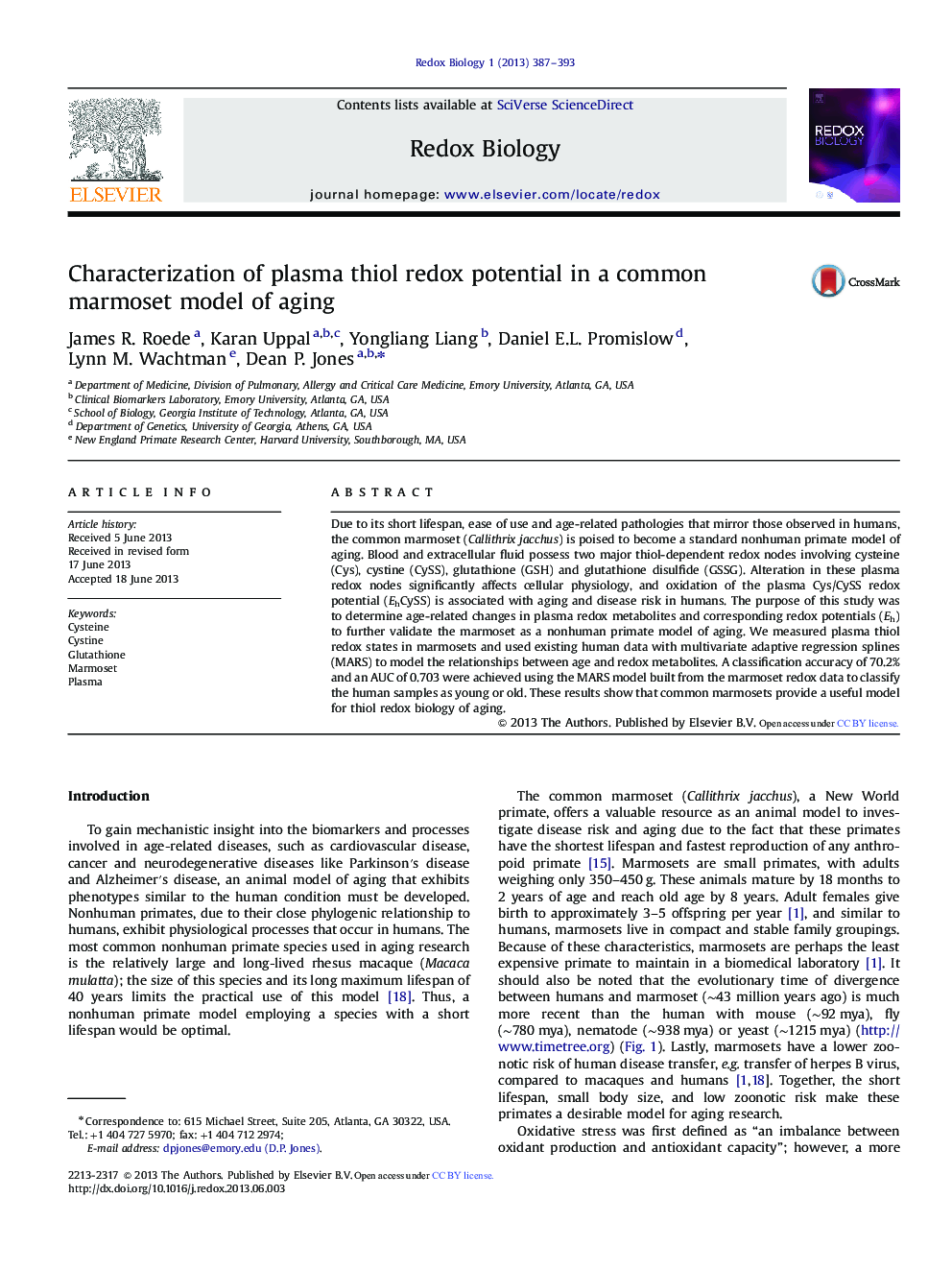| کد مقاله | کد نشریه | سال انتشار | مقاله انگلیسی | نسخه تمام متن |
|---|---|---|---|---|
| 1923259 | 1048882 | 2013 | 7 صفحه PDF | دانلود رایگان |

• Characterization of the Common Marmoset as a model for aging research.
• Plasma thiol redox measurements in marmosets ranging in age from 2–16 years.
• Similar to humans, marmosets exhibit age-related alterations in plasma thiol redox metabolites.
• Marmoset redox data can be used to classify humans as young or old.
Due to its short lifespan, ease of use and age-related pathologies that mirror those observed in humans, the common marmoset (Callithrix jacchus) is poised to become a standard nonhuman primate model of aging. Blood and extracellular fluid possess two major thiol-dependent redox nodes involving cysteine (Cys), cystine (CySS), glutathione (GSH) and glutathione disulfide (GSSG). Alteration in these plasma redox nodes significantly affects cellular physiology, and oxidation of the plasma Cys/CySS redox potential (EhCySS) is associated with aging and disease risk in humans. The purpose of this study was to determine age-related changes in plasma redox metabolites and corresponding redox potentials (Eh) to further validate the marmoset as a nonhuman primate model of aging. We measured plasma thiol redox states in marmosets and used existing human data with multivariate adaptive regression splines (MARS) to model the relationships between age and redox metabolites. A classification accuracy of 70.2% and an AUC of 0.703 were achieved using the MARS model built from the marmoset redox data to classify the human samples as young or old. These results show that common marmosets provide a useful model for thiol redox biology of aging.
Figure optionsDownload as PowerPoint slide
Journal: Redox Biology - Volume 1, Issue 1, 2013, Pages 387–393